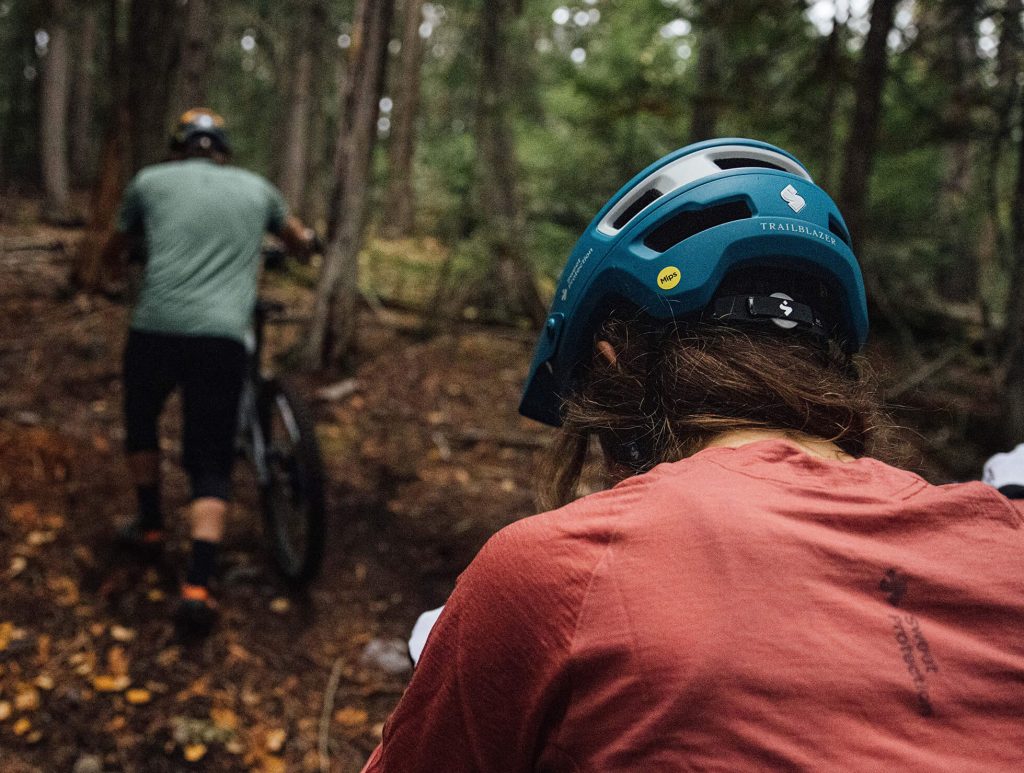Swedish helmet technology provider Mips AB saw second-quarter revenues cut in half from the year-ago comparable period, led by a continued sharp decline in its Sport and Moto businesses. Earnings per share were cut 75 percent for the period.
Company President and CEO Max Strandwitz said in a presentation that net sales decreased “mainly due to a continued soft demand in the bike sub-category.”
Net sales for the three-month period ended June 30 fell 51 percent in Swedish Krona (SEK) terms to SEK 102 million from SEK 206 million in Q2 last year. Currency-neutral sales growth reportedly sank 53 percent for the quarter.
Sales in the Sport category, which includes the Bike and Snow sub-categories, fell 53 percent to SEK 91 million in Q2 from SEK 194 million in Q2 last year.
The bike market was said to be still challenging in the quarter, despite a gradual improvement in demand during the period. The company said there was a slow start to the quarter, and Mips saw that customers were more cautious with new orders as inventory levels remained high and the bike season had a slightly late start due to a cold and rainy spring. Demand reportedly grew gradually during the quarter once the season got going.
“Bike retailers in the key U.S. and European markets continued to reduce their inventory levels during the period, as expected,” Strandwitz suggested. “Inventory levels at many retailers have returned to historically normal levels, and we assess that inventory levels at retailers will be fully normalized during the third quarter.”
Still, he said they see that their customers’ inventory levels, the bike helmet manufacturers themselves, are still higher than normal. “We see that they are more restrictive with additional orders for the current season compared to previous years,” Strandwitz continued. “This general caution is mainly due to the fact that they have tied up more capital than normal in inventory this season. This also means that although there are many positive signals in the bicycle market, there is a lag effect in our sales, which are generated from sales to helmet manufacturers, compared to what many companies that sell directly to retailers.”
Strandwitz said the inventory situation is still unbalanced for its customers and retailers worldwide, with an excess inventory of helmets at lower price points.
“On the positive side, we note that on most markets, the inventory levels have returned to historic levels for helmets at medium- and higher-price points,” he said. “The unbalanced inventory situation continues to be a challenge for our customers and resellers due to how it impacts their cash flow, which also makes them more restrictive when it comes to purchasing large volumes of new products.”
In the Snow sub-category, Mips continued supplying many Mips solutions after a strong winter season, especially in the North American market.
“We will also deliver a lot of products within snow next quarter as not all of the helmets have yet been manufactured for the upcoming season,” Strandwitz shared.
Sales in the Motorcycle category declined 42 percent to SEK 7 million in Q2 from SEK 11 million in the year-ago quarter.
“We saw a soft quarter within Motorcycle with a decrease compared to previous years due to a changed purchasing pattern among our most important customers,” Strandwitz explained. “We are obviously not satisfied that we have not shown growth in the Motorcycle category during the first half-year. The major reason is that the shift to the sector’s new ECE 22.06 standard has taken many manufacturers longer to implement than we had anticipated, but also that they chose to postpone orders to us for the coming season. The changed purchasing pattern does not mean lost sales, but that orders are placed in the coming quarters instead of this quarter.”
The Safety Helmet category continued strong growth in line with the company’s ambitious plans. Sales in the category grew 439 percent to SEK 4 million from SEK 1 million in the year-ago period.
Strandwitz said the company continues to see good progress within the Safety category regarding new customers and actual increase in sales compared to the same period last year.
Overall, company gross margins declined 350 basis points to 70 percent of sales due to the fixed cost of goods.
Overall operating profit amounted to SEK 23 million, or 22.6 percent of sales, in the first quarter, from SEK 107 million, 51.7 percent of sales, in the year-ago period, representing a 78 percent decline. Strandwitz said the lower operating margin could largely be explained by the lower sales, ongoing investments within strategic initiatives in marketing, research and development as well as the negative impact of currencies.
Mips earnings per share declined 75 percent to SEK 0.76 from SEK 3.01 in Q2 last year.
Cash flow from operating activities amounted to SEK9 million from SEK55 million last year.
First Half Results Summary:
- Net sales decreased by 45 percent to SEK 190 million in H1 from SEK 343 million in H1 last year;
- Currency-neutral sales declined 48 percent;
- Operating profit amounted was SEK 38 million, or 20.2 percent of sales, in H1, compared to SEK 168 million, or 49.1 percent of sales, in the 2022 first half;
- Diluted earnings per share was SEK 1.31 in the half, compared to SEK 4.81 in the year-ago half; and
- Cash flow from operating activities amounted to negative SEK 33 million for the year-to-date period versus positive cash flow of SEK 92 million in the 2022 year-to-date period.
“Even if the demand to end customers is lower than last year, sales are higher than before the pandemic situation, and we continuously gain market shares in all our key markets,” Strandwitz concluded. “This means that we will see a gradual increase in demand during the last six months of the year. We assess that the third quarter will continue to be challenging but expect to see a stronger fourth quarter and therefore show growth for the second half of the year. With our significant customer base and models equipped with Mips solutions, we will gradually return to growth in the second half of the year as helmet manufacturers produce helmets for the next cycling season.”
Photo courtesy of Mips
















